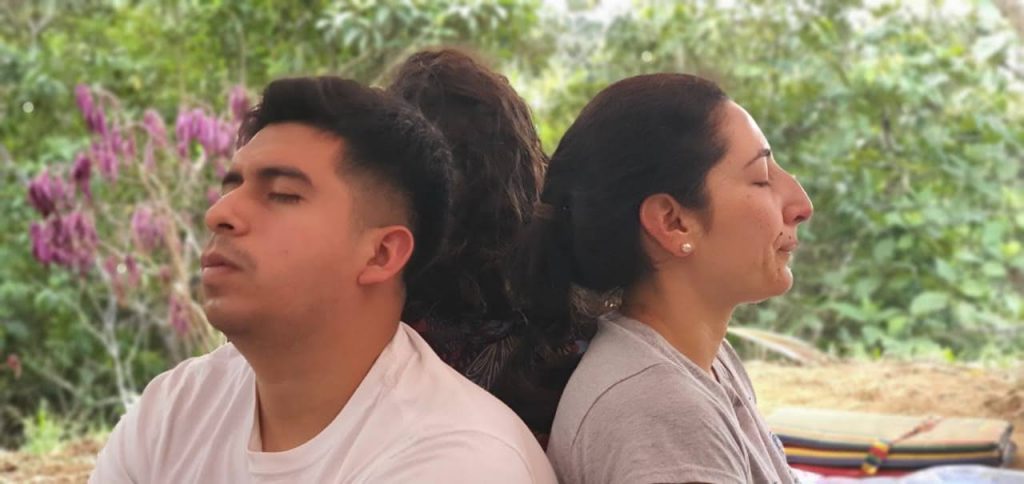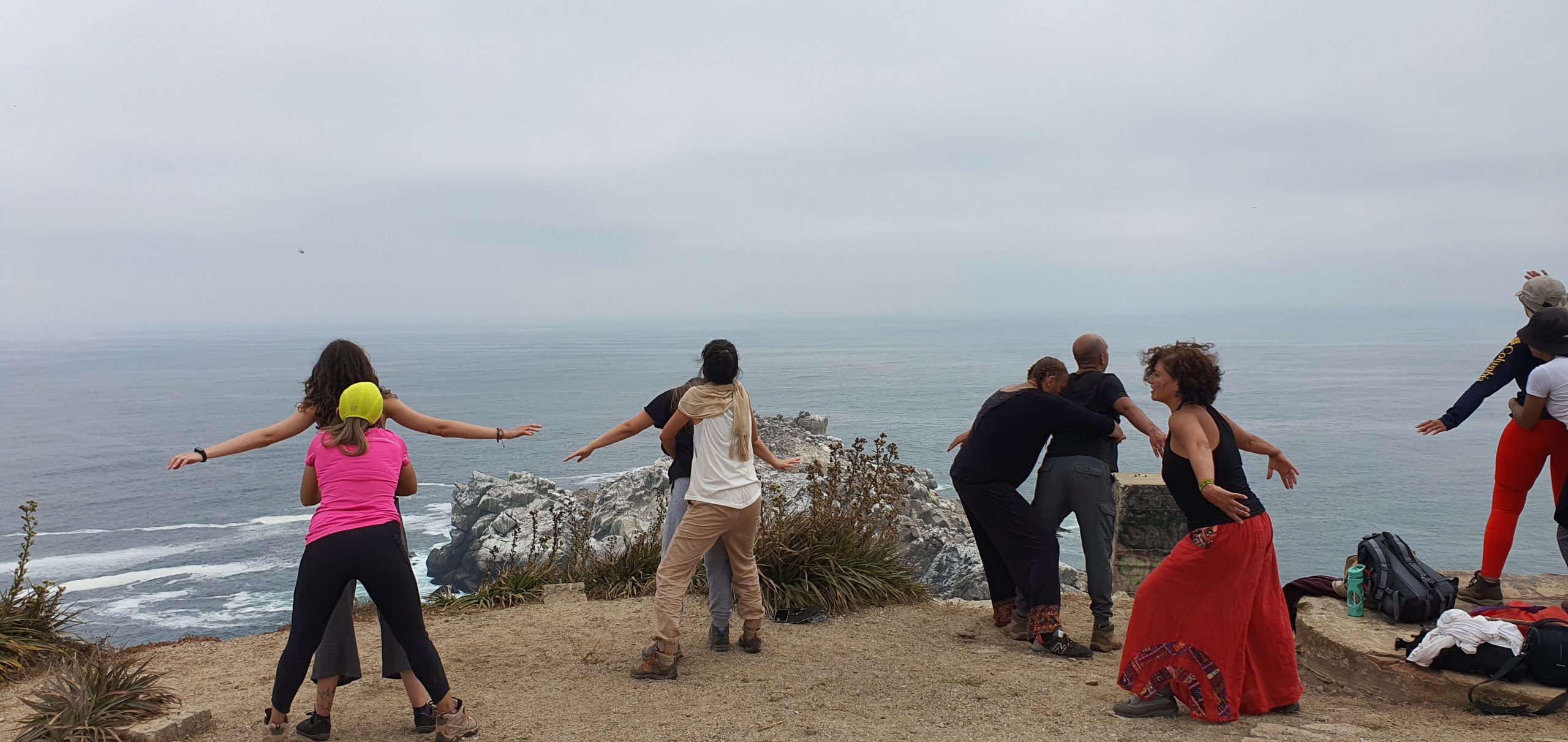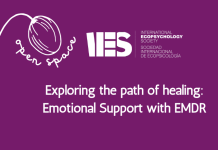I love this title, it’s not mine, it belongs to a book on Experiential Education that I’ve read a lot of times [1] , and I like it because it perfectly explains the misunderstanding we have regarding managing emotions, where we want to control them , hide them, appease them, deny them or avoid them, everything except proper management of these energies that accompany us and give color to our lives.
Most of us have observed people throwing orange peels or apple cores in the bush and when asked about their attitude, they simply answer that they are biodegradable. From the approach of Luckner and Nadler (1992), it seems that the term biodegradable has a magical quality that makes things instantly break down or dissolve. What we don’t take into account is the time it takes for many of these things to break down on earth and the change or damage they cause to ecosystems.

In a similar way we believe that if emotions such as sadness, anger or discomfort are set aside and neglected, they will magically disappear, however if they are not resolved they are a contaminant to the human system. Even if emotions are hidden or scolded, people will continue to be influenced or sometimes burdened by them. The impact of these emotions is usually seen late, and people are not aware that we are getting poisoned in many ways.
These emotions are not biodegradable unless we pay attention to them.
What we have learned to do with our emotions is:

This is how contamination occurs. An improved change might be to track and navigate emotions by learning to:

1. Let them flow: Identify and know the emotions.
- What do you feel?
- Being with them rather than abolishing them.
- Look and let feel the deep emotions in our body/psyche.
Usually under every “superficial” physical, mental or emotional sign lies a deeper emotion. For example: physical symptoms reveal more painful emotions; or what we say to ourselves and what we say to others, is also a reflection of powerful emotions; or emotions that make us uncomfortable for no apparent reason, are coming to tell us something important about our emotional system, since its main objective is to maintain the balance of our entire system.
These signs can give us information and help us identify and know our essential and deep emotions.
2. Letting it touch you: Enhance (amplify) and accept emotions:
- It’s okay to feel.
- It’s healthy to feel.

Love and pain flowing - Love and pain flowing
- It is not necessary to explain it or look for the cause.
- It is necessary to focus your attention for a moment on emotions, and how their energy flows through your body/psyche.
- Live with your emotions as if they come in a wave. Just like they arrive… they leave…
- Express them: Deliver them and communicate emotions.
I feel…
This happens to me…
My body reacts this way….
Need…
I can draw, speak and give movement to my emotions.When we identify them, accept them and express them, emotions can be transformed, and perhaps in this way they find themselves in a wonderful humus that provides nutrition so that something beautiful and healthy is born again in me.
For example, by identifying the fear of uncertainty and allowing it to flow within us, we can clearly feel how this fear becomes a ground to better prepare ourselves and begin to deploy our shelters and resources in the face of any situation.
Or Ecoanxiety, that discomfort and emotional pain that human beings experience as a result of environmental degradation and the loss of biodiversity, proposed among others by Glenn Albrecht [2] (Australian philosopher and environmentalist), can become, if we manage to see that discomfort and pain without judgment, without pathologizing it, and if understanding it in its possibility of reconnection with the earth, in ECOEMPATIA, displaying in a beneficial way all the love we feel for the earth.
Along the same lines, the Ecophilosopher and activist Joana Macy [3] proposes in her methodology the Work that Reconnects the urgency of working with the emotions of pain, fear and frustration generated by living in a land on the brink of collapse. And we see how by consciously feeling our emotions, expressing them deeply in contained spaces, emotional alchemy operates, where we can see with new eyes, because we are also feeling with new bodies that have space to compost and transmute the emotional.
This is how Macy puts it:
- Our pain is in equal measure of love. We only cry for what worries us deeply. “Blessed are those who cry.”
- By speaking out about fear, she also shows the confidence and courage it takes to speak up within a society that is afraid of fear.
- And here we realize that the anger we express stems from our passion for justice.
- And as for this bowl, its emptiness is to be honored as well. Being empty allows the new to emerge.

What other examples do we have of emotions that, if we accept and express them, are based on a source of inspiration?
On the other hand, and continuing with the title of this article, let’s see different ways and ways in which the relationship with nature helps us to compost and transmute our emotions:
- The chemistry of the forest: Many plants and trees produce chemical compounds such as terpenes and phytoncides that can have positive effects on mood and mental health. These compounds can help reduce stress and anxiety, and improve mood.
- Spiritual Connection: Nature can be a calm and comforting place to meditate and reflect. Many people find a spiritual connection to nature that helps them feel more at peace and in harmony.
- Contact with the earth: Some research has suggested that direct contact with the earth, such as walking barefoot on the grass, can have a positive effect on physical, mental and emotional health.
- Exposure to natural light: Natural light, especially sunlight, is important for regulating the circadian rhythm and mood. The circadian rhythm is the internal biological clock that regulates sleep-wake cycles and other bodily functions throughout the day. Maintaining a harmonious circadian rhythm can help you feel more rested, more alert, and better prepared to deal with the emotional challenges of the day.
- A systematic and conscious work with the elements: Fire helps to transmute our densest emotions, water gives us all the information about fluidity and cleanliness, earth helps us understand the art of composting emotions, and air , allows me to soften-me.

EMOTIONS ARE NOT BIODEGRADABLE… BUT THEY ARE ENERGY THAT FLOWS IN OUR BODY/EARTH AND WHICH, IF WE ACCEPT THEM WITH LOVE, GENERATE LIFE AND MOVEMENT.
————-
[1] Luckner y Nadler (1992). Procesando la experiencia. Estrategias para potenciar y generalizar el aprendizaje. Segunda edicion. Kendall / caza editorial
[2] Alberto, Glenn. (2020). Las emociones de la Tierra: Nuevas palabras para un nuevo mundo
[3] Joanna y Young Brown Molly. Nuestra Vida como Gaia. La Guía actualizada del Trabajo que Reconecta. Traductor: Adrián Villaseñor Galarza












